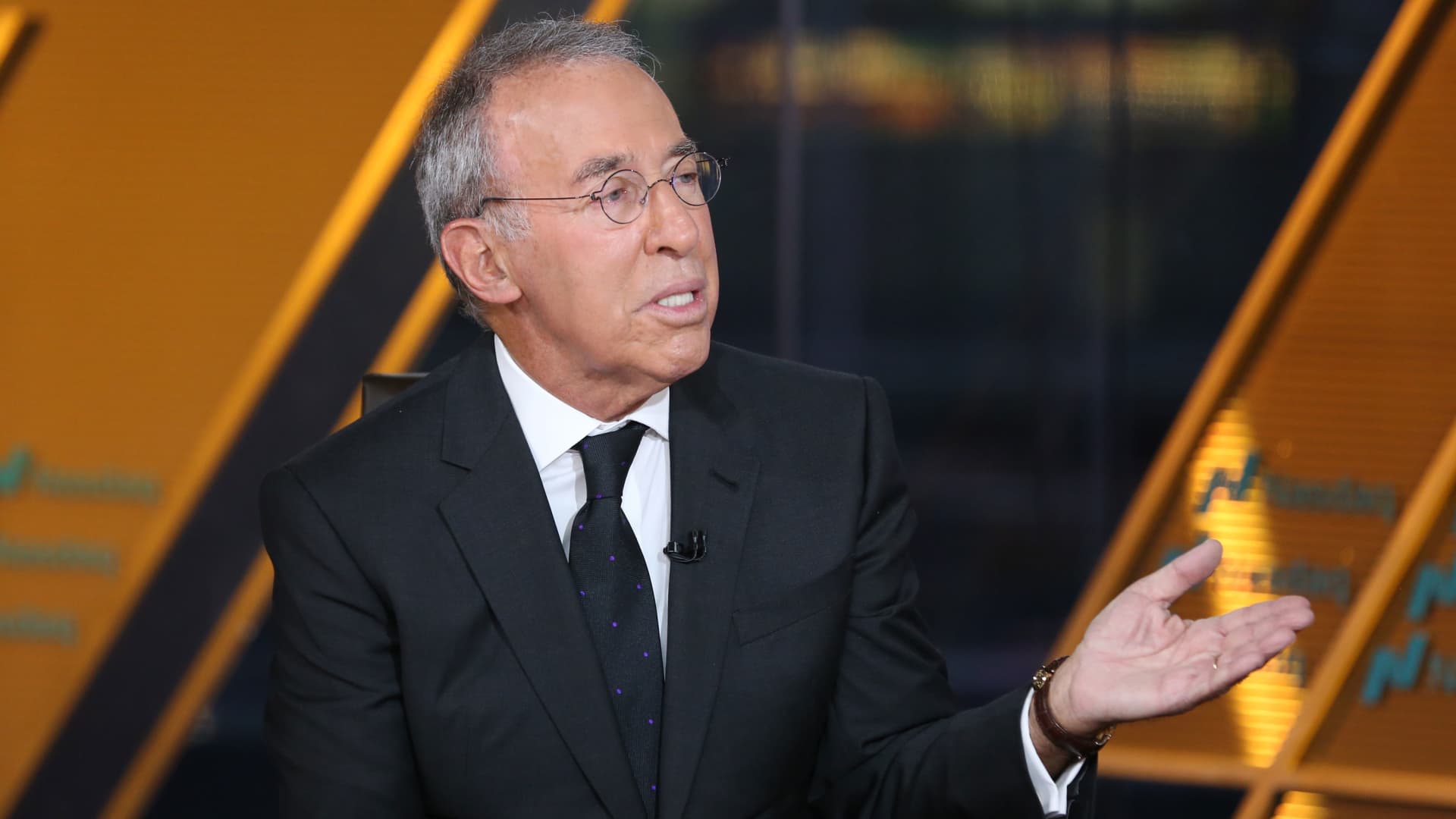China’s shipments to U.S. plunge 33% in August as overall exports growth hits a 6-month low

A cargo ship is loading and unloading foreign trade containers at Qingdao Port in Qingdao Port, Shandong Province, China on June 9, 2025.
Cfoto | Future Publishing | Getty Images
China’s exports to the U.S. plunged 33% in August while overall growth slowed to its weakest in six months, weighed down in part by President Donald Trump’s crackdown on transshipments and as the impact of frontloading exports wanes.
Imports from the U.S. also dropped 16% from a year ago, customs data showed.
China’s overall exports climbed 4.4% in August in U.S. dollar terms from a year earlier, customs data showed Monday, marking their lowest growth since February while missing Reuters-polled economists’ estimates for a 5.0% rise.
That growth slowed from the prior two months, in part reflecting the statistical effect of a high base last year when China’s exports grew at their fastest pace in nearly one-and-a-half years.
“With the temporary boost from the U.S.-China trade truce fading and the U.S. raising tariffs on shipments rerouted via other countries, exports are likely to come under pressure in the near term,” said Zichun Huang, China economist at Capital Economics said in a note.
Huang pointed out that exports were little changed on a seasonally adjusted month-on-month basis, with the slowdown in the headline figure mainly reflecting last year’s high base.
Imports rose 1.3% last month from a year ago, missing Reuters estimates for a 3% growth. Imports rose for a third straight month after returning to growth in June, albeit still muted due to the persistent real estate slump, rising job insecurity, among other things.
China has increasingly relied on alternative markets, particularly Southeast Asia and European Union nations, Africa and Latin America, as U.S. President Donald Trump’s trade policy has pressured U.S.-bound shipments.
Going abroad
“Chinese exporters have been pushing for higher market share in other countries due to weak domestic demand in China. This ‘going abroad’ initiative likely contributed to the resilience of Chinese exports so far this year,” said Zhiwei Zhang, president and chief economist at Pinpoint Asset Management.
The country’s shipment to the European Union bloc, the Association of Southeast Asian Nations and Africa surged 10.4%, 22.5% and nearly 26% in August, respectively.
This year through August, China’s exports to the U.S. dropped 15.5% from the same period last year, while imports declined 11%. Over that same period, its exports to EU, ASEAN, Africa and Latin America surged 7.7%, 14.6%, 24.6% and nearly 6%, respectively.
Nonetheless, no one country has come close to the U.S. which remains China’s largest trading partner on a single-country basis, absorbing $283 billion of Chinese goods this year as of August. Exports to the EU bloc stood at $541 billion over the same period.
Beijing and Washington on Aug. 11 agreed to extend their tariff truce by another 90 days, locking in place U.S. tariffs of around 55% on Chinese imports and 30% Chinese duties on U.S. goods, according to Peterson Institute for International Economist.
But bilateral talks appear to be struggling to reach a breakthrough, with a late-August visit to Washington by top Chinese trade negotiator Li Chenggang yielding little progress.
Trump has threatened a 200% tariff on Chinese goods if Beijing fails to uphold its promise of increasing rare-earth magnet exports to the U.S. China’s exports of rare earths in August jumped 22.6% to 5,791.8 metric tons, customs data showed.
Chinese exporters have relied on routing shipments to third countries to sidestep U.S. tariffs — a tactic that is facing the test of tightening U.S. scrutiny over the so-called transshipments, which analysts have warned could weigh on Chinese exports in the coming months.
The U.S. in July announced a 40% tariff on any shipments that Washington determines to be transshipped.
Sluggish domestic demand
Economists are watching to see if Beijing unveils additional fiscal support in the fourth quarter to spur domestic demand and cushion weakening exports. Policymakers have, however, appeared to prioritize reining in industrial overcapacity over allocating more for the flagship “cash-for-clunker” program aimed at boosting demand.
A slew of local governments across the country have paused their consumer trade-in programs — that subsidize spendings on cars, household appliances and smartphones — due to the rapid depletion of the allocated funds.
Deflationary pressure is likely to persist in the country. Goldman Sachs forecast the wholesale price inflation will remain “deeply negative,” with the producer price index falling 2.9% year on year in August.
The month-on-month reading could turn positive, helped by Beijing’s “anti-involution” policies aimed at reducing excessive price-cutting and the recent increases in upstream raw material prices, the Wall Street bank predicts.
The headline CPI inflation will remain “moderately negative,” falling 0.2% last month from a year ago, Goldman estimates.
Neo Wang, China strategist at Evercore, expects the People’s Bank of China to cut its policy rate by 10 basis points to 20 basis points next week that’ll see a raft of economic data from China.
Beijing is expected to release next Monday figures on retail sales, industrial output, urban investment, home pieces and urban jobless rate for August.
“With those numbers expected to again show signs of subdued growth, Beijing can use a rate cut to counter pessimism and pacify those expecting bad news to trigger good news,” Wang said.
— CNBC’s Evelyn Cheng contributed to this report.









